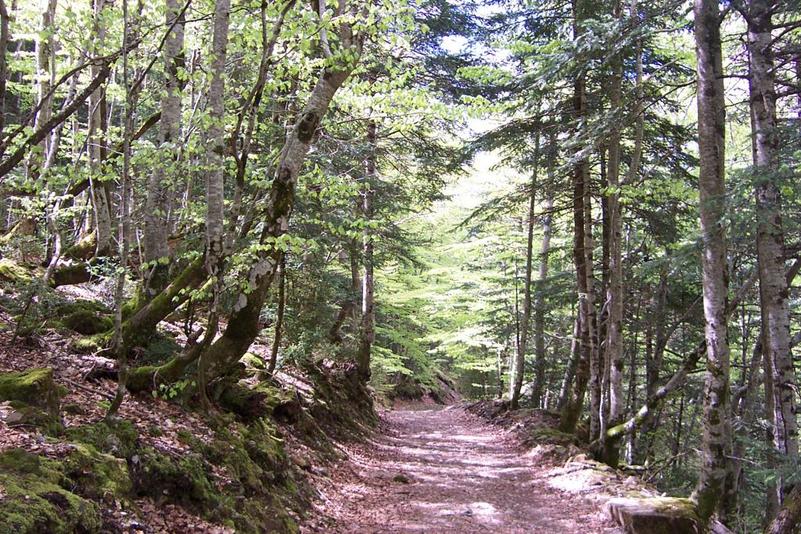Take a Hike and Lower Some Stress
A hike in nature is important for staying healthy. Recently, research has shown that activity in the outdoors may be just as useful for decreasing stress as it is for remaining physically fit.
There have been multiple studies that have found positive effects from an individual’s presence in nature, showing that there were positive emotions in people who looked at pictures of natural settings as well as an improved psychological wellbeing in those exposed to a forest environment. However, there had not been previous studies that examined the effects of nature on levels of stress.
It is important to study the effects of stress on individuals as it can lead to many health problems such as heart disease, obesity, and diabetes. It can also result in insomnia and other sleep problems. Stress affects not only the body but also one’s mood, with increased stress leading to lack of motivation, sadness, or irritability. Because of all these negative effects, it is important that individuals maintain low stress levels to increase their well being.
There have been multiple studies that have found positive effects from an individual’s presence in nature, showing that there were positive emotions in people who looked at pictures of natural settings as well as an improved psychological wellbeing in those exposed to a forest environment. However, there had not been previous studies that examined the effects of nature on levels of stress.
It is important to study the effects of stress on individuals as it can lead to many health problems such as heart disease, obesity, and diabetes. It can also result in insomnia and other sleep problems. Stress affects not only the body but also one’s mood, with increased stress leading to lack of motivation, sadness, or irritability. Because of all these negative effects, it is important that individuals maintain low stress levels to increase their well being.
Image Source: rawpixel
A new study published in the Environmental Health and Preventive Medicine Journal examined the physiological effect of individuals exposed to a forest environment, connecting these physiological effects to psychological changes. The study focused on the effects of Shinrin-yoku, a Japanese coined term that means being present in taking in the forest environment. The scientists were especially interested in learning how Shinrin-yoku could affect an individual’s physiology, leading them to conduct field experiments in 24 Japanese forests. There were two groups of test subjects: one that walked in a forest and one that walked in the city. Upon arriving at their respective environments, the participants would sit in a chair and observe the landscape for approximately 14 minutes before walking around for 16 minutes.
In order to see the physiological effect of the contrasting environments, the researchers measured each participant’s salivary cortisol, blood pressure, pulse rate, and heart rate. Salivary cortisol is a hormone released in response to stress, making it an immediate indicator of stress levels. These measurements were taken before and after the walk through the given environment, allowing scientists to see the effect that walking through the environment had on the test groups.
The results showed that individuals who were exposed to the forest environment had a lowered cortisol, heart rate, and blood pressure. The level of stress was lower in those who were in the forest environment.
Additionally, the participants in the forest group had greater parasympathetic nerve activity and lower sympathetic nerve activity than those who were in the city. The parasympathetic nervous system is a division of the nervous system that is called the “rest and digest” system, as it conserves energy and returns the body to a state of calm. On the other hand, the sympathetic nervous system is called the “fight or flight” system, as it controls the body’s response to a nearby threat. Since the forest environment increases parasympathetic nerve activity while decreasing sympathetic nerve activity, the forests allowed participants to be more relaxed and calm than those in the city environment.
The study’s findings are especially important now with the idea of playing outside being replaced with the idea of playing on a mobile device among younger populations. The results of this study showed that staying indoors may not be a healthy option for people since they will miss out on the stress relieving benefits of being in a natural environment. Because of this, it is important to take time out of the day and spend time outdoors, which can help lead to a less stressful life.
In order to see the physiological effect of the contrasting environments, the researchers measured each participant’s salivary cortisol, blood pressure, pulse rate, and heart rate. Salivary cortisol is a hormone released in response to stress, making it an immediate indicator of stress levels. These measurements were taken before and after the walk through the given environment, allowing scientists to see the effect that walking through the environment had on the test groups.
The results showed that individuals who were exposed to the forest environment had a lowered cortisol, heart rate, and blood pressure. The level of stress was lower in those who were in the forest environment.
Additionally, the participants in the forest group had greater parasympathetic nerve activity and lower sympathetic nerve activity than those who were in the city. The parasympathetic nervous system is a division of the nervous system that is called the “rest and digest” system, as it conserves energy and returns the body to a state of calm. On the other hand, the sympathetic nervous system is called the “fight or flight” system, as it controls the body’s response to a nearby threat. Since the forest environment increases parasympathetic nerve activity while decreasing sympathetic nerve activity, the forests allowed participants to be more relaxed and calm than those in the city environment.
The study’s findings are especially important now with the idea of playing outside being replaced with the idea of playing on a mobile device among younger populations. The results of this study showed that staying indoors may not be a healthy option for people since they will miss out on the stress relieving benefits of being in a natural environment. Because of this, it is important to take time out of the day and spend time outdoors, which can help lead to a less stressful life.
Featured Image Source: "National park of Ordesa and Monte Perdido." by Quique251 is licensed by CC BY-SA 3.0.
RELATED ARTICLES
|
Vertical Divider
|
Vertical Divider
|
Vertical Divider
|






